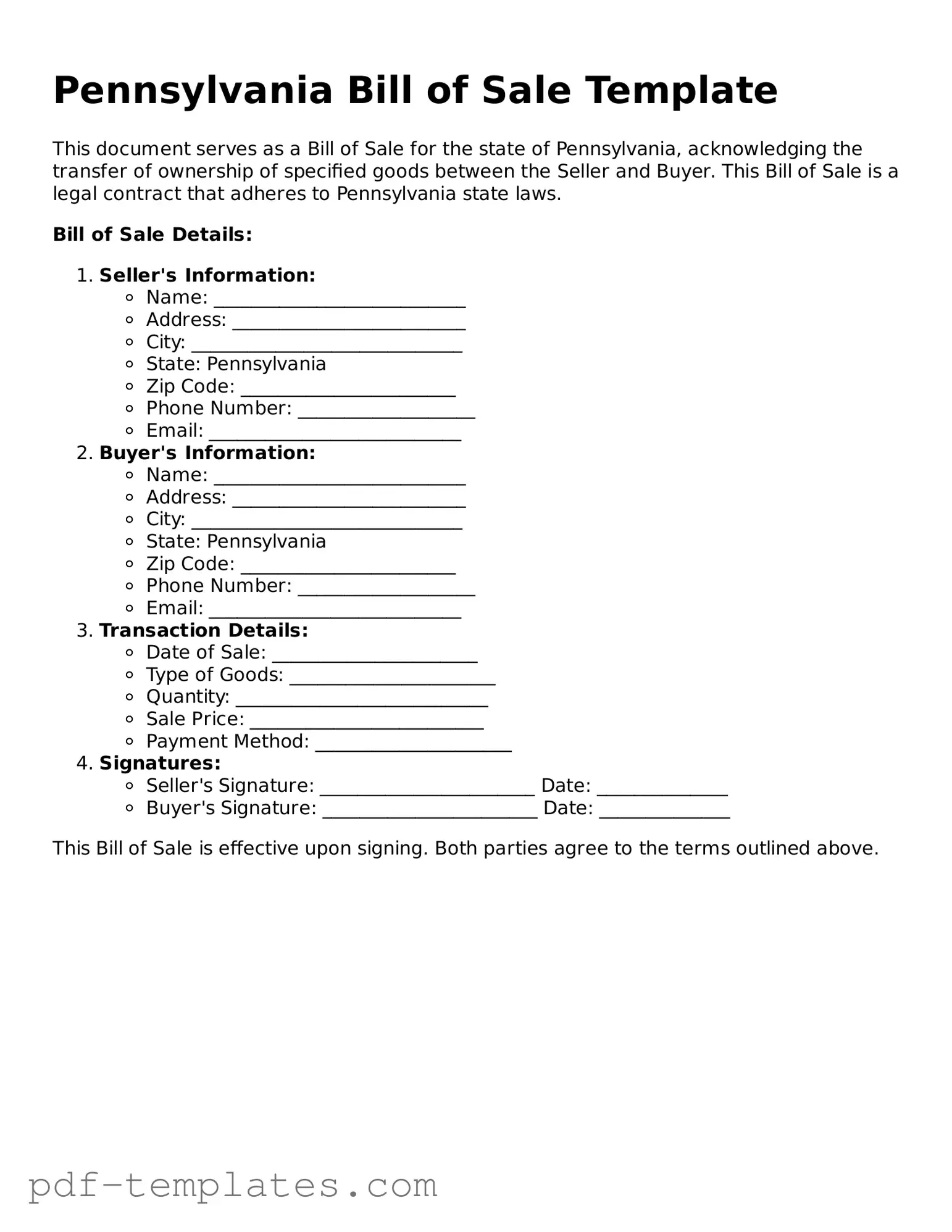Official Bill of Sale Template for Pennsylvania State
A Pennsylvania Bill of Sale is a legal document that records the transfer of ownership of personal property from one party to another. This form serves as proof of the transaction and outlines the details of the sale, including the items being sold and the agreed-upon price. Understanding how to properly fill out this form is essential for both buyers and sellers to protect their rights.
Ready to complete your Bill of Sale? Click the button below to get started!
Customize Form Now
